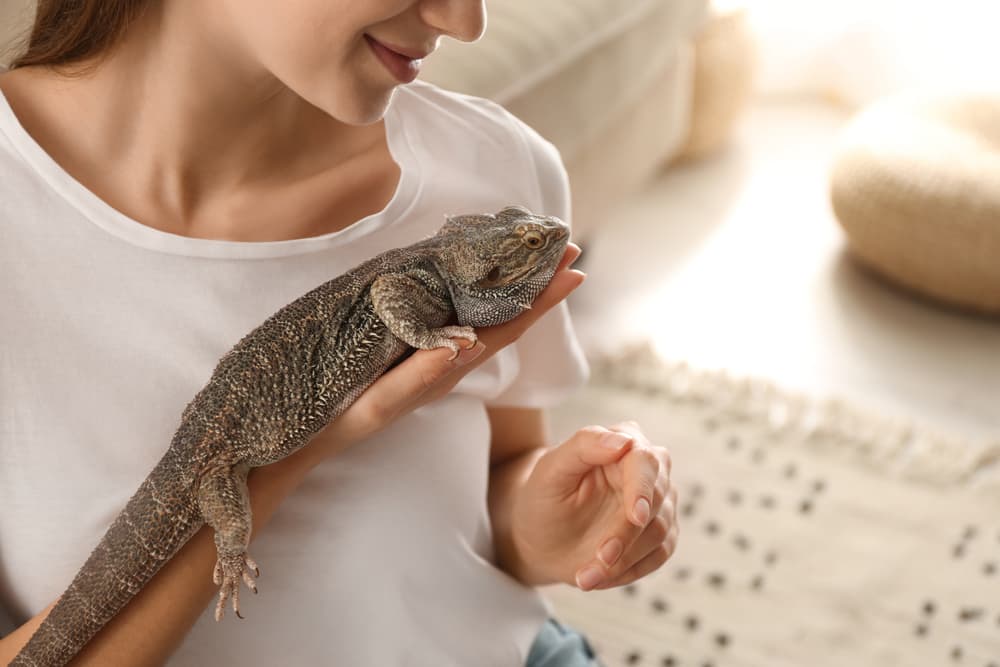Reptiles can make perfect pets for those living in apartments or other small spaces.
A lizard or snake is never going to scratch the walls or piddle on the carpet!
Reptiles don’t cause allergies or screech, meow or bark either. And with the right care to keep your reptile healthy, you’ll derive hours of pleasure from watching them interact.
Here's what you need to know about caring for your reptile.
Before you buy
The first step in getting a reptile pet is to get a licence from your state or territory wildlife authority. Always buy captive-bred reptiles - it’s illegal to capture or trade in wild reptiles.
Of course you need to choose the right reptile for your circumstances. According to the Australian Museum, the most popular Australian reptile pets for beginners are blue-tongue lizards and central bearded dragons.
Housing your reptile
Once you’ve decided on your pet, you need to set up a suitable home. Turtles require a large aquarium with somewhere they can get out and bask under a lamp. Water changing and filtration is very important.
Lizards and snakes are housed in reptile vivariums, dry aquariums with front opening doors for easy access and cleaning. The enclosure needs to be big enough to supply a varied environment for your pet, as well as a range of temperatures.
It needs substratum material, gravel, sand, bark or leaf litter, and a basking area – a rock or small log – underneath the heat source. You’ll also need plants (live or artificial), rocks and hiding places for your pet. You can have a lot of fun decorating your vivarium. Visit your local pet store for ideas.
Caring for your reptile habitat
Keep the enclosure clean to prevent the spread of infections. Remove faeces from the substrate and at least once a week move your pet to a safe space and give the vivarium a thorough cleaning with detergent and water.
Rinse well and dry before replacing the substrate and returning your pet.
Getting light, heat and humidity levels right
Your new pet is cold-blooded, so it will rely on you to provide the heat it needs to function.
Modern vivariums often come with ready-made lighting and heating systems for particular reptiles. If yours doesn’t, you’ll need to set up your own system. Remember you’re seeking to replicate the natural rhythm of the days and seasons with lighting and heating.
Most species are happy at 25-30 degrees during the daytime and cooler during the night. You should have a variation of temperatures across the terrarium – say 18 degrees at the cool end and 32 at the warm end – so your pet can self-regulate to some extent.
Excess moisture in the enclosure can cause fungal and bacterial infections, so check the humidity level every day and adjust as necessary. You’re aiming for a humidity level of about 50% for desert species and above 60% for tropical species.
You can use a fine mist spray to raise the humidity level or a fan to lower it. Live plants raise the humidity level so artificial plants may be a better option for desert species.
Feeding your reptile
Bear in mind that most lizards are omnivores. You can feed them minced fresh meat, fruit and vegetables. Lizards such as geckos also need live prey, which means feeding maggots, flies, beetles or crickets. You can buy live crickets and mealworms from your pet store, plus a range of other options such as dehydrated crickets.
Snakes eat mice or small rats. The good news is that you can buy them frozen and thaw them before feeding them to your pet. The other good news is that many snakes only require feeding every two or three weeks, and even less often in winter.
Still, if you find the whole thing too grisly, you might want to choose a more vegetarian reptile! Blue tongue lizards and bearded dragons do well on a mixed diet of fruit, vegetables and insects. You'll also need to ensure clean water is available at all times.
And finally
This is a brief overview to caring for your reptile, but so much depends on what sort you get. It's a good idea to look online for more information specific to your particular pet, or speak to a vet who specialises in reptiles.
With the right care, your reptile pet will live a long and contented life and you’ll gain an insight into the habits and character of these fascinating animals!






























